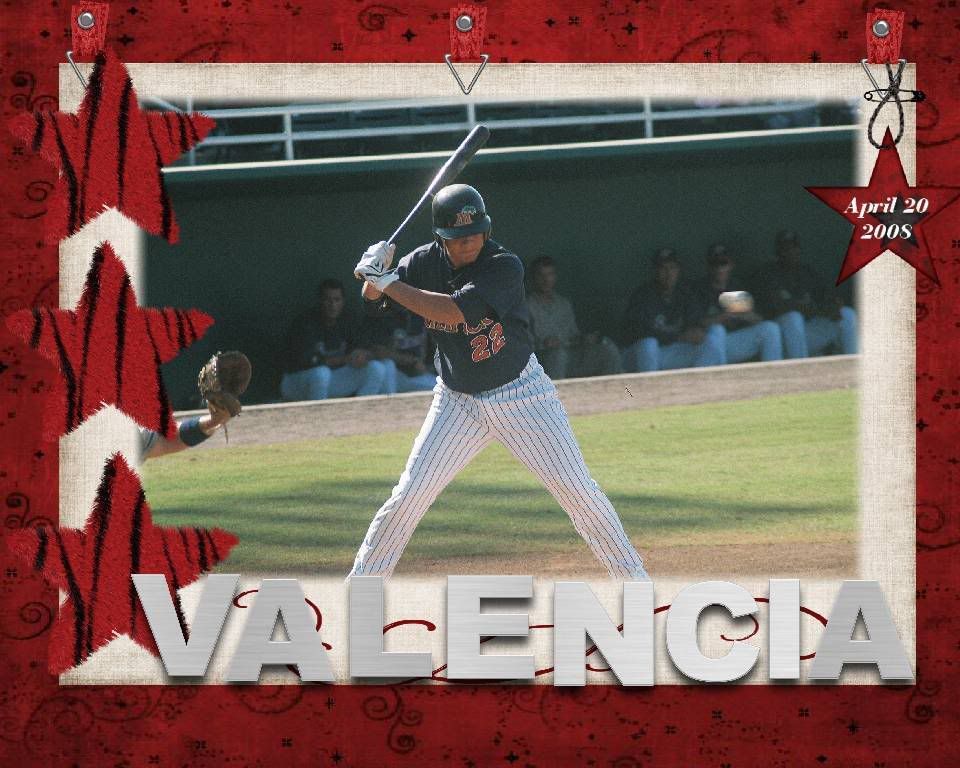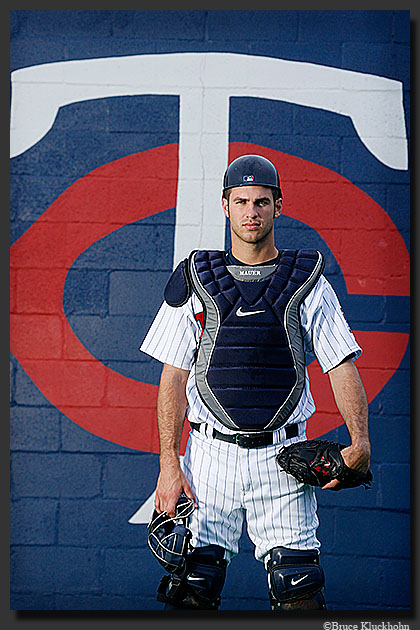No, I'm not talking about how long we'll need to wait to to get this team out of this funk, though that's probably true too. I wrote a little bit last year about how the Twins always have one gut-wrenching west coast road trip like this. (And then David Wintheiser was kind enough to actually research it and tell me I'm imagining things in the comments. But I would like to revisit that. Our record might not be terrible, but it's bad. And I remember our worst losses and worst moments of the season happen on these trips.) In any case, I'm not talking about this trip. (Ever, hopefully.) No, I'm talking about....
 Joe Crede's shoulder received a shot (probably cortisone) yesterday to reduce the inflammation, and so we'll likely need to wait until Sunday to find out if he needs to go on the disabled list. If he does, there isn’t any question what the Twins should do. They should call up third base prospect Danny Valencia. Of course, that doesn’t mean they will.
Joe Crede's shoulder received a shot (probably cortisone) yesterday to reduce the inflammation, and so we'll likely need to wait until Sunday to find out if he needs to go on the disabled list. If he does, there isn’t any question what the Twins should do. They should call up third base prospect Danny Valencia. Of course, that doesn’t mean they will.God help us if they don’t. First, it means we’re going to be treated to a couple of grimace-inducing moves like recalling Matt Tolbert, handing shortstop to Nick Punto and platooning Brian Buscher and Brandon Harris at third base. There’s nothing to like about that last sentence.
And we'll also watch the Twins blogosphere self-combust in a flash of blue flame. Nobody wants that.
But God help Valencia if they do. He will be the latest in a new Twins tradition. In the Ron Gardenhire era we Twins fans have annually psyched ourselves up about a minor leaguer who is having a great year. And annually, we've anticipated similar success to spill over to the majors. And annually, we've been disappointed. The results have varied, but they've almost never exceeded our expectations.
That, by the way, should be expected. Any reasonable sabremetrician would tell you they can’t really predict a two-month performance for a seasoned major league player, let alone someone dealing with jumping to that level for the first time. That doesn’t mean minor league performance is not important. It just means that it is important for telling you about the long-term future of the player, not the near-term results.
So let's look back at the participants in our mid-season tradition. We'll see why we got excited, and whether they met our expectations that year. Then we'll just add a note about the path their career took after that.
2002 – Michael Cuddyer
The Hype: In 2002, the Twins had an incredibly stable lineup for eight of the nine lineup positions. There was Ortiz, Pierzynski, Mientkiewicz, Rivas, Koskie, Guzman, Jones, Hunter and ... the three-headed Kielty-Mohr-Buchanan-stein. Cuddyer was supposed to be the last piece of that puzzle. He was hitting .311 with 20 home runs in Rochester when the Twins traded away Brian Buchanan to make room for him.
Result: His impact in 2002 was good, not great. He played part time for a little over a month, made a trip back to Rochester for a couple of weeks, was called up again at the end of August, and played much more in September. He was the hottest right fielder going into October and so he started in right field for the playoffs, where he struggled defensively, particularly against the Angels. But expectations were that he was that final piece.
He was, but not until 2006, when most of those other guys were already gone.
2003 – Justin Morneau
Hype: Morneau was a top prospect who started the year in Double-A, but was promoted to AAA in late April when Todd Sears was injured. By early June he was hitting .308 with 13 home runs (in a little over a month) and was called up to the Twins, mostly to get time at DH. (Wanna guess who he replaced? Would you believe Chris Gomez?) Twins fans were hoping he would be the power bat the team was lacking.
Result: He struggled. Doug Mientkiewicz had the first base job, so Morneau was going to need to force his way into the lineup to play regularly, but it wasn’t close. He hit just .227 with three home runs before he was demoted at the end of July. He was recalled for September, when he played a lot more, but was left off of the postseason roster and finished the year with a .226/.287/.377 line.
He made a much bigger impact in 2004, but struggled in 2005 and the beginning of 2006 until he broke through, eventually winning the AL MVP in 2006.
2004 – Jason Kubel
Hype: Like Morneau, Kubel was a top prospect who started the year in Double-A, but was promoted in mid-May. BTW, he replaced Morneau, who had been promoted to the majors. Like Morneau, he put up obscene numbers (.343/.398/.560) in Rochester. And like Morneau, he was called up to the majors, this time in late-August so he would be eligible for the postseason. He was viewed as a late-season gamble to provide some punch in the playoffs.
Result: Decent. He didn’t play every day, but when he did, he hit well enough (.300 BA, 2 HR) to make the postseason roster. Later that fall, he tore up his knee in the Arizona Fall League, which delayed his career as a productive regular for several years.
2005 – Scott Baker
Hype: Baker was anticipated because he had raced through three level of the minors in 2004 and even positioned himself to help out the Twins bullpen in spring training of 2005. He started hot with Rochester and ended up posting a 3.01 ERA there for the year, in between several appearances with the Twins.
Result: Good, but not enough to get the team over the hump. In May he was called up to help out in the bullpen for a week. In July he was called up for one start – and then called up for another a couple of weeks later. He took Joe Mays spot in the rotation at the end of August and finishing with a 3.35 ERA. It was not enough to get the Twins into the playoffs.
It was also enough to position him for the fifth starter job in 2006. And posting a 6.47 ERA over 16 starts was bad enough to keep him bouncing between the majors and AAA (where his ERA was just 2.47) that year. He reached the point we thought he would in late 2007 and has been a top of the rotation starter since, though he's struggled this year.
2006 – Matt Garza
Hype: Garza might have been the most hyped name on this list, and that’s saying something considering Morneau is on it. The Twins had been looking for starting pitching and in one baseball season Garza had rocketed from High-A ball all the way to the majors, posting a 1.99 ERA and 154 K in 135.2 IP. His first start had a rock concert atmosphere.
Result: Bad. He struggled with his command and anything resembling an offspeed pitch, looking alternately good and over matched in starts. Over 10 games (9 starts) he posted a 5.76 ERA.
He began the following year in AAA but was called up at the end of June after reportedly working on his offspeed pitches. He posted a 3.69 ERA in 16 starts before being traded to the Tampa Bay Rays.
2007 – Kevin Slowey
Hype: Slowey kept pace with Garza for most of 2006, but didn’t take the final step to the majors until June 1, 2007, when he replaced Ramon Ortiz in the rotation.
Result: Bad, then good, but not good enough. He struggled, being demoted in July with a 5.84 ERA. He was called up again in September and redeemed himself, with a 3.30 ERA and 29K in 28 innings. Of course, by the then Twins had fallen out of the pennant race.
He carried that September success into 2008, with a 12-11 record and a 3.99 ERA. He’s been less consistent this year, but has a major league career locked down.
2008 – Denard Span
Hype: I dislike ending with this one, because it is the weakest example of the hype machine. Any excitement caused by Span’s .340 BA and .434 OBP in Rochester was counter-balanced by the 678 OPS he posted there the year before. But there was at least a little excitement to see if this year hadn’t been a fluke.
Result: He's also different because he was great. I’d list him as the 3rd most valuable offensive player on the team last year, and WPA agrees. Technically, it didn't matter as the Twins came up one game short of a postseason berth.
So let's review that list....
- Morneau and Garza, the most hyped names on the list, struggled.
- Kubel and Cuddyer did well enough, but neither was a difference maker.
- Baker and Slowey pitched decently, not great, and the Twins missed the playoffs those years.
- Span probably had the biggest impact, the Twins just missed the playoffs, but he was also the least hyped.
Looking at Valencia, his path this year most resemble Morneau's callup year. Valencia hasn't put up the eye-popping minor league numbers that Morneau did at lower levels, but like Morneau, Valencia started the year at AA and really has mashed the ball in his short time at Rochester. Valencia has also been promoted quickly recently, as he was in High A ball just last June. That should be where the similarities end - Valencia isn't going to be another Morneau.
And strangely enough, for Twins fans hoping for a boost this year, they should hope he isn't. The hype machine hasn't served us well this decade.






